No product in cart
Diamond Brite
-
(0s)
- Add your review
Diamond Brite Finishes are factory blends of Diamond Quartz™, select aggregates and polymer-modified Portland cement. This unique blend is ideal for new or existing submerged surfaces in gunite, shotcrete and concrete Swimming Pools, Spas and Water Features. Available in a variety of colors and textures. Various hues and aggregate sizes are available to fit any design requirement. Diamond Brite […]
#Code Products:
Description
Diamond Brite Finishes are factory blends of Diamond Quartz™, select aggregates and polymer-modified Portland cement. This unique blend is ideal for new or existing submerged surfaces in gunite, shotcrete and concrete Swimming Pools, Spas and Water Features. Available in a variety of colors and textures. Various hues and aggregate sizes are available to fit any design requirement. Diamond Brite finishes are factory blended to provide the pool owner with an extremely durable and attractive alternative to traditional white pool coatings.
• Superior Bonding
• High strength and rapid curing
• Extremely etch resistant
• Application can be completed the same day
• Aggregate exposure evenly controlled
• Easily Pumpable
BLUE QUARTZ AND OYSTER QUARTZ IN STOCK
INSTALLATION:
SURFACE PREPARATION:
Examine pool surfaces to identify conditions that might interfere with proper bonding of coating. Look for algae, mold, mildew, dirt, paint, mortar droppings, efflorescence, patching compounds, loose tile, cracked plaster, etc. Identify hollow spots in plaster by sounding. Clean pool surfaces of all material that might interfere with proper bonding of coatings. Clean with high-pressure water or by sand blasting. Wash with chlorine until algae, mold, and mildew are gone. Wash oil and grease spots using trisodium phosphate or equivalent and water; soak if necessary. Remove all cleaning solutions via high-pressure washing.
Remove and repair all hollow and delaminated plaster. Saw cut an area 3 inches around bad spots and remove plaster inside the saw cut. Undercut the edges of remaining plaster. Fill holes with specified patching cement (SGM Mortar Mix & Southcrete 25 Acrylic Admix) to level of existing plaster.
Remove loose tile and fittings; undercut existing plaster 2 inches below the tile line, and around return lines and fittings to a depth of 3/8 inch.
Stop water penetration from outside pool. Plug cracks and leaks around fittings using hydraulic cement (SGM Dynamite Pool Patch). Etch cleaned surface with muriatic acid solution. Use concentration necessary to clean and roughen surface; smooth surfaces may require higher concentration. Neutralize surface with solution of baking soda and water to eliminate acid residue, which can cause bond failure.
Remove remaining acid solutions via high-pressure washing. Plug pool inlets and outlets to prevent clogging with expandable plugs or threaded caps. Mark location of fittings using tape on coping or on a measured drawing. Place sump pump at main drain to remove all running and standing water.
Do not begin installation until concrete pool shell has cured at least 28 days.For renovation projects (plastering over an existing plaster pool finish) and poured or formed concrete shells apply SGM Bond Kote as directed. Allow Bond Kote to cure for at least 6 hours before plastering. Plaster should be applied to SGM Bond Kote within 3-5 days. If left for a longer period before finish is applied, ensure Bond Kote is clean and free of dirt, efflorescence and other contaminants. If necessary, clean Bond Kote by brushing vigorously while spraying with water; chlorine may be used as needed.
MIXING:
Diamond Brite is made in batches of 4,000 to 20,000lbs (1,800 to 9,000 kg.) using natural ingredients. For this reason there will be variations in shade between batches. Batch numbers are printed on the end of each individual bag. It is important that the user follow these instructions carefully to ensure the most consistent color throughout the pool.
1. Separate the bags according to the batch numbers on the bottom of each bag. Record all batch numbers.
Warranties submitted without valid batch numbers are VOID.
2. Blend different batches together in each mix according to the ratio present at the job site. For example: If there are 30 bags total on the job and there are 20 bags of Batch A and10 bags of Batch B then use 2 bags of A to 1 bag of B in every mix. >>
>> Coverage: each 80 lb. bag will cover approximately 22 – 25 sq. ft., to a thickness of minimum 3/8” – 1/2”.Surface roughness affects coverage rates.
3. The shelf life of Diamond Brite is up to one year in unopened properly stored container. Diamond Brite can be mixed by using low-speed paddle mixer, low rpm drill with mud paddle, ribbon blender or concrete plaster mixer. Measure and add 1 ½ to 2 gallons (5.7 to 7.6 L) of clean potable water to mixer.
4. Hold back a portion of the water and add as necessary as mixing progresses. Lower water to cement ratios will produce plaster of greater strength and density. Therefore it is best to use as little water as needed to produce a workable mix. Excess water will reduce strength and increase shrinkage (check) cracks.
Note: Mix water quality is extremely important. Well water or water high in metal and mineral content will cause discoloration in finished Diamond Brite. Additionally, water of high hardness or alkalinity will cause the plaster to effloresce, releasing high levels of salts that produce calcium scale. This is especially true of colored Diamond Brite such as Midnight Blue, Onyx, Tahoe Blue and French Gray. Check mix water for metals, minerals, hardness and alkalinity before using.
Start mixer and add Diamond Brite as quickly as possible to ensure that all the material has the proper mix time.
Mix for a minimum of 5 minutes but no more than 10 minutes. This ensures even distribution of aggregates and increases the working time of the plaster. Insufficient mix time will result in uneven setting and shade variations. Too much mix time will produce an overall weaker plaster and may entrain undesirable air bubbles. As a rule of thumb, mix for only the amount of time required to produce a consistent, homogenous mix. Calcium Chloride may be used as an accelerator. It must be fully dissolved in water allowing impurities to settle out. Pour off the solution from the top being careful not to add impurities to the mix. The impurities found in calcium chloride flake and pellets have been known to cause discoloration in pool plaster.
No more than 2% by weight of cement (about 1/2 lb. per bag) can be used.
Overuse may cause discoloration.
PUMPING:
Although it is not necessary to use a plaster pump, many contractors do.Included here are some helpful hints for successful pumping. Increase the size of the pump manifold from 3” to 4”. Change the valve ball from plastic to steel to improve longevity. Set plaster pump to the lowest gear by moving the belt. Always begin pumping with a full stroke on the main piston. This is accomplished by advancing the wheel until the cam is at its highest position.
Prepare a slurry of cement and water or pump aid and run it through the pump first to prime the pump and lubricate the hoses. Pour the mixed plaster slowly into the pump hopper. Do not pour all the material in at once. Agitate the material in the hopper to prevent separation of the cement and aggregate.
Avoid unnecessary stopping during the pumping process. Diamond Brite aggregate will tend to settle in the pump manifold and hoses when the pump is stopped. Agitate the remaining material left in the hopper to reduce clogging. Do not try to clear a blockage using the pump. Disassemble and clean the manifold and hoses when clogged. Do not over-water mix. This will only cause the material to separate, clogging the pump and hoses.
APPLICATION:
Substrate should be cool and damp but not dripping wet. Mist the shell with cool, clean potable water. Nonabsorbed water may be removed by using sponges and/ or air. Standing water will weaken Diamond Brite and may cause washouts. Note: Hot, dry shells will cause rapid setting of the plaster and result in check or shrinkage cracking and delamination.
All materials and effected areas should remain above 50° degrees F (10° C) or below 100° degrees F (38° C) 24 hrs. prior and 72 hrs after placement. Discard unmixed material (lumps).
Apply plaster liberally with flat side of trowel using sufficient pressure to key in a scratch coat on the vertical surfaces. Beginning with the shady walls and working to the sunny walls, trowel a scratch coat onto the walls and allow to set up until it becomes tacky.
The set time will vary according to the temperature and humidity. Once the scratch coat has become tacky, apply a finish coat to the entire pool surface beginning in bowl area and working toward the shallow end, troweling and blending walls and floor together to achieve a seamless appearance while working to a final thickness of one-half inch (½”) (10 mm-12 mm).
Uniform troweling will help to ensure even exposure, reduce washouts and produce a comfortable slip-resistant finish. The technique of “slick troweling” is recommended. During application make several passes with pool trowels to compact the aggregate and ensure a smooth dense finish. In this process the cement paste is brought to the surface during troweling, then removed with the trowel. This produces a slick surface and minimizes the exposure needed. Small amounts of lubrication water may be necessary for smoothing out and compacting the finish in this process.
The aggregate can be seen through a thin film of cement paste after troweling is complete. Special attention must be given to the filling in of spike holes. The applicator must be careful to fill all spike holes with Diamond Brite aggregate to avoid visible spike holes. Extra care must be taken to ensure proper troweling in the coves and corners. Specialty trowels are required for these areas. Insufficient troweling in these areas will result in roughness and washouts (loss of cement and aggregate) during the exposure process.
EXPOSURE:
Note: You must have one workman for every 300 square feet to properly expose Diamond Brite. The exposure time is limited to approximately one hour but will vary according to local conditions.
Beginning too early or too late will result in uneven exposure. Some areas may be ready for exposure while other areas are still being troweled. Constant inspection of the Diamond Brite for readiness is imperative. There are several techniques commonly used to expose Diamond Brite. The following is a list of the most popular techniques.
I. Water Washing With Brushes
Note: This is by far the most effective technique and produces the best results with standard Diamond Brite Finishes. It is not recommended for the Diamond Brite Quartz Series Finishes. When the Diamond Brite has lost its sheen or is no longer damp, it may be ready for exposure with soft bristle brushes and water. The material must be sufficiently set up to allow applicators to walk on the floor without leaving footprints. Wear white cotton socks or foam shoes when exposing Diamond Brite. Boots and bare feet are not recommended. Test the plaster for readiness by carefully washing a small area with a soft bristle brush.
If the cream washes away without losing aggregate the exposure process may begin. Starting with sunny or fast setting areas begin washing away cement paste with water and brushes. Use a bucket first then progress to a soft flow of water from a garden hose as the material begins to harden. Begin using stiff bristle brushes as the set progresses. Examine the plaster for hot spots that may be setting quickly. Mist these areas with water to allow longer exposure time. Over-cured cement paste will not remove easily and may require stiff bristle brushes to remove. Avoid slow setting areas like shady walls and the bowl.
Washing too soon in these areas will cause washouts. If an area washes out it must be re-troweled immediately. Keep some extra Diamond Brite mixed up for use in patching washout areas. Keep a sump pump running in the main drain at all times to discharge the wash solution. Dispose of wash as directed by local requirements. Avoid leaving hoses, buckets or any other items on the plaster during exposure. Any object left on the plaster during this critical phase may leave a “shadow” on the surface. In the event of shadowing heat may be carefully applied to remove the discoloration. When all of the cement paste has been removed from the surface uniformly, the brush phase is complete. If done thoroughly, this will complete the exposure process. The process of acid washing as described below is optional. If desired, an acid wash may now be performed using a 25% solution of Muriatic Acid (higher concentrations may be needed for stubborn areas) and water to remove the thin film that may remain on the surface. Proper safety equipment must be worn at all times. Begin washing the bowl first and work up to the shallow end.
Following this procedure will minimize “rivers” or streaks on the floor. The use of an acid wash additive to reduce fumes and ensure uniform coverage is highly recommended. Neutralize and discard the wash solution according to local requirements. Neutralize acid remaining on the Diamond Brite with Soda Ash and water to avoid discoloration.
II. Acid Washing
Note: This technique is commonly used in cold climates or when the plasterers lack sufficient experience to undertake water washing. It is easier to do but can produce a less uniform finish. Use this technique when applying the Quartz Series. After troweling, allow the plaster to fully set up. This may take anywhere from one to a few hours or overnight, depending on local jobsite conditions. Begin acid washing by using a 25% solution of Muriatic Acid (higher concentrations may be needed for stubborn areas) and water to remove the cement film that may remain on the surface. Increase the concentration of the acid solution as needed.
Proper safety equipment must be worn at all times. Begin washing the bowl first and work up to the shallow end. Following this procedure will minimize “rivers” or streaks on the floor. Acid wash walls and steps last. Do not allow acid wash solution to puddle in the bowl area. Use a sump pump to constantly discard the run off after it is diluted and neutralized. The use of an acidwash additive to reduce fumes and ensure uniform coverage is highly recommended. Neutralize and discard the wash solution according to local requirements. Neutralize acid remaining on the Diamond Brite with Soda Ash and water to avoid discoloration.
III. Wet Acid Wash
Note: Also called Acid Start-up or No Drain Acid wash. This technique is sometimes used after water washing. It is also used in areas where the fill water is high in alkalinity and or hardness. When used alone without water washing this technique produces the least desirable results. It will not remove all of the cement paste evenly and may result in a streaked appearance. Remove all metal such as ladders and lights from the pool and turn off the circulation system. After filling the pool test the alkalinity to determine the amount of Muriatic acid needed to lower the Total Alkalinity to zero. Distribute the acid evenly throughout the pool. Brush the pool thoroughly over the entire surface twice daily for 3 days. Add a sequestering agent and raise the pH to the proper level with Soda Ash. Start the circulation system and follow the start up instructions.
IV. Powerwash Exposure Technique
Hard trowel pool to uniform smooth finish. Let finish air dry for 1-3 hours after completion. Begin acid wash process by filling pool with 8 to 10 inches of water. This water will buffer acid solution during exposure process. Acid wash with 100% muriatic acid starting with walls working down to bowl. Leave acid on for approx. 1-2 minutes before rinsing off with hose. Keep constant water on floor to diffuse acid solution avoiding streaks.
Keep acid washed areas wet thru entire process or cement paste will re-set. Complete acid wash on floor and bowl of pool, finish by pumping out water.Begin power-washing phase with 2500 PSI machine using 45-degree nozzle. Keep tip 12 to 18 inches away from surface perpendicular to plaster finish. Power wash surface with approx. 20% overlap to ensure complete exposure.
Start power-washing walls from tile line thru cove of pool, finish with floor. Pump out remaining water; install main drain covers, lights and fittings.
FILL AND BALANCING:
Follow recommended fill and balancing procedures to ensure a successful start-up. Fill pool completely and without interruption with clean, potable water. The use of a filter during fill is strongly recommended.
First Day:
Add sequestering agent upon initial fill per manufacturer’s instructions and maintain water circulation for 24 Hours prior to balancing pool chemistry. Adjust pH to 7.2 – 7.4 and total alkalinity to 80 – 120 PPM.
Second Day:
Record pH, total alkalinity, calcium hardness and temperature levels. Adjust pH to 7.4 – 7.6 and total alkalinity to 80 – 120 PPM. Dissolve all chemicals completely in water before adding to pool, and allow sufficient time for each chemical to be fully dispersed before adding other chemicals. DO NOT ADD CHLORINE OR CALCIUM CHLORIDE.Brush entire surface twice daily for the first three (3) days.
CAUTION:
WARNING – EYE IRRITANT CONTAINS PORTLAND CEMENT. Product is alkaline on contact with water. Avoid splashing into eyes or contact with skin. During mixing or application avoid contact with eyes. In case of such contact, flood eyes repeatedly with water and call physician. Wash thoroughly after handling and before smoking or eating. Do not take internally. Contains free Silica. Avoid breathing dust. Prolonged exposure to dust may cause delayed lung disease (Silicosis). Wear NIOSH approved mask for Silica dust. KEEP OUT OF REACH OF CHILDREN.
You must be logged in to post a review.


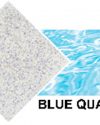
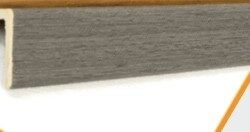
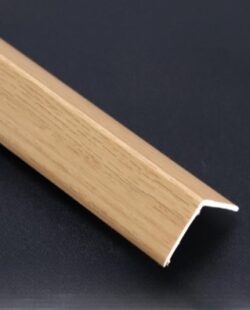
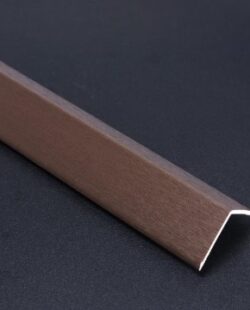
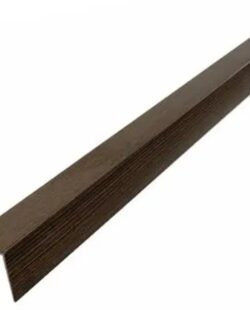
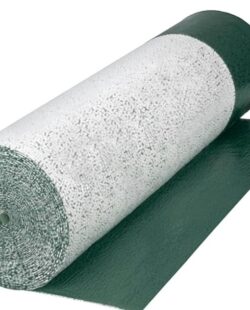
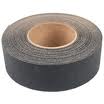
Reviews
There are no reviews yet.